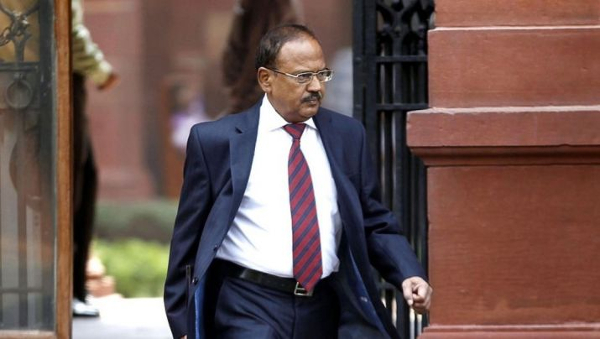India’s Defence Planning Committee (DPC), headed by National Security Adviser Ajit Doval, is expected to submit the National Security Strategy (NSS), effectively the country’s military doctrine, to the government in October, focusing on future war fronts, the requirement (if any) of naval expeditionary forces, and the projection of comprehensive national power.
The much-awaited report has been mostly completed and some finishing touches are being put to it before its submission next month, three senior officials involved in the exercise said on condition of anonymity. The unclassified part of the report will be made public after the Narendra Modi government or the Cabinet Committee on Security (CCS) accepts the fundamental document defining the Indian military posture.
The DPC was formed in April 2018, but the report was held up pending the announcement of a new post of chief of defence staff (CDS), the single point military adviser to the government. The announcement of the creation of the post was made by PM Modi from the ramparts of the Red Fort on Independence Day last month. The first Indian CDS is expected to be current Army chief General Bipin Rawat with a tenure of two more years.
While the defence ministry is tight-lipped about the report, the draft NSS is expected to define India’s position on no first use (of nuclear weapons) in the current context as well as other red lines that could lead to strategic escalation.
The report is also expected to define the military threat to India in terms of the possible number of fronts. For instance, the Indian military today is readying itself to face threats simultaneously on two fronts, north and the west, in a worst-case scenario. It is this definition that will be used by the defence ministry to decide the quantity of ammunition to be kept in ready stock. As of now, India is prepared with ammunition inventory for a 10-day intensive war.
The NSS document will also spell out the Indian naval posture in the coming years, including the requirement for an expeditionary force. The Doval committee will also answer whether the Indian Navy requires more aircraft carriers worth billion of dollars or development of air bases in any of the 611 islands under India in the Arabian Sea, Bay of Bengal and Andaman Sea to venture deep across the Indian Ocean or the Persian Gulf, even the South China Sea. For instance, the tri-service Andaman and Nicobar Islands Command could easily project Indian might into the South China Sea with the existing air bases being upgraded and naval bases being equipped with jetties to handle larger warships. The A & N Command sits on the mouth of Malacca Straits with Banda Aceh in Indonesia a mere 163km away as the bird flies from Campbell Bay in Nicobar.
Although the Indian Navy has been calling itself an expeditionary force in the new millennium on paper, the NSS will define where there is any need to keep Rs 20,000 crore carriers without any distant enemy in near future.
With the CDS expected to take over all tri-service structures including Special Operations, Cyber and Space Commands, the NSS will also define the role of stand-off and anti-satellite (ASAT) weapons in future wars, keeping in mind the Indian doctrinal posture.
Source: HT
Image Courtesy: India TV
You may also like
-
IAF Aircraft Set Course For Exercise Eastern Bridge VII At Oman
-
IAF Set To Host The Indian Defence Aviation Exposition-II At Jodhpur
-
Defence Secretary to co-chair 5th India-Philippines Joint Defence Cooperation Committee meeting in Manila
-
Simultaneous Launch Of ‘malpe And Mulki’, Fourth And Fifth Ships Of Asw Swc (Csl) Project
-
Aatmanirbharta in Defence: MoD signs Contract with HAL for 240 AL-31FP Aero Engines for Su-30MKI Aircraft
